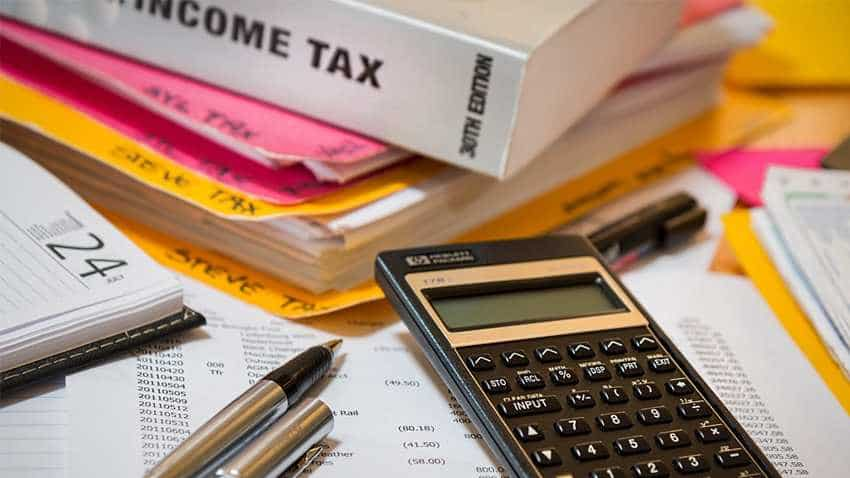Income Tax filing: Paid more money? Company deducted excess amount? DO THIS to get refund
In case you, as a taxpayer, have paid taxes in excess of your total liability to the Income-Tax department, then you are eligible for an income tax refund.

In case you, as a taxpayer, have paid taxes in excess of your total liability to the Income-Tax department, then you are eligible for an income tax refund. The tax refund arises when the sum of advance tax paid, self-assessed tax paid and tax deducted at source (TDS) against the PAN of the taxpayer is higher than his/her actual tax liability.
The taxpayer can claim an income tax refund while filing his tax returns for the financial year. Once the income tax return has been filed and e-verified by the assessee, the department starts processing the returns and determines the refund payable. After the returns are processed, a communication is sent to the taxpayer via SMS and email.
The communication is received as an intimation under section 143(1) of the Income Tax Act. This intimation reflects the amount of refund that will be credited to your bank account along with a refund sequence number. The refund amount may differ from the amount claimed by the assessee in his income tax returns. This is because the intimation is generated after adjusting any arithmetical errors appearing in the return, any incorrect claim or any loss brought forward being disallowed.
The department processes the returns and issues the income tax refund via a refund banker, State Bank of India (SBI). From FY 2018-19 onwards, only e-refunds will be issued by the departments to the bank accounts linked with PAN and pre-validated in the e-filing portal.
The due date to file income tax returns for FY 2018-19 is already gone. Many individuals have already received their intimation under section 143(1) along with the refunds. In case you filed your tax returns in the days towards the deadline, the department may take a while to process your returns.
You can log on to the income tax e-filing website and check the status of your refund. Alternatively, you can visit ‘TIN-NSDL website’, enter your PAN, relevant assessment year and check the status of your tax refund. The messaging displayed under the refund status can be of different types and conveys as below:-
1) Refund returned: In case your bank details are incorrect, the refund issued is returned to the department.
2)Processed through direct credit but failed: It means that the refund banker, SBI has credited the refund amount to the bank account but it failed due to any of the following reasons:
a)Bank account details are incorrect or account is closed
b)Account holder may be deceased
c)Bank account stands inoperational
d) It is a non-resident Indian (NRI) account
3)Refund processed through NEFT/NECS but failed: This message is displayed when the refund processed through NEFT/NECS has failed. It might be because of the incorrect bank account number, incorrect bank name or wrong IFSC code filled during filing income tax returns.
4) ECS refund advice received but not reflecting in your bank account: It might happen that you have received an email from SBI with the details of the refund credited to your bank account.
If the same is not reflected in your bank account, you can check with your bank whether the amount has been credited to the wrong account. You can also send an email to [email protected] for further query.
According to Archit Gupta, Founder and CEO - ClearTax, here are the steps to take if you haven't received your refund yet:-
1) Log in to the www.incometaxindiaefiling.gov.in.
2) Click on the ‘My Account’ tab and select the ‘Service Request’ link.
3) Select the 'Request Type' as 'New Request' and the 'Request Category' as 'Refund Reissue'. Thereafter, click 'Submit'.
4)Details such as PAN, Return Type, Assessment Year, Return acknowledgement number, Communication Reference Number, Reason for Refund Failure and response column are displayed.
5)Click on ‘Submit’ under the response column. All the pre-validated bank accounts with status validated and EVC enabled will be displayed.
6)Select the bank account to which you want the refund to be credited and click on 'Continue'.
7)Verify the details such as Bank Account Number, IFSC, Bank Name and Account Type, as displayed on the screen before clicking on continue button.
8)Click ‘Ok’ on the pop-up, if the details appearing are correct. Then, e-verify the same using an electronic verification code (EVC), aadhaar OTP or digital signature certificate (DSC) to submit the request.
9)A success message will be displayed on the screen confirming the Refund Re-issue request submission.
02:13 PM IST






 Income Tax Alert! Filing ITR online? Ensure e-verification before logging out; step by step guide
Income Tax Alert! Filing ITR online? Ensure e-verification before logging out; step by step guide Alert! Three Month Tax Saving Exercise: PPF, loans, insurance to education, top investment options for taxpayers
Alert! Three Month Tax Saving Exercise: PPF, loans, insurance to education, top investment options for taxpayers  Planning to opt for new income tax slabs 2020? You can still claim this NPS account benefit
Planning to opt for new income tax slabs 2020? You can still claim this NPS account benefit Changes required in Income Tax law to benefit homebuyers; check what experts think
Changes required in Income Tax law to benefit homebuyers; check what experts think Yet again, Finance Minister pays heed to Zee Business Managing Editor Anil Singhvi's call, extends ITR filing deadline
Yet again, Finance Minister pays heed to Zee Business Managing Editor Anil Singhvi's call, extends ITR filing deadline